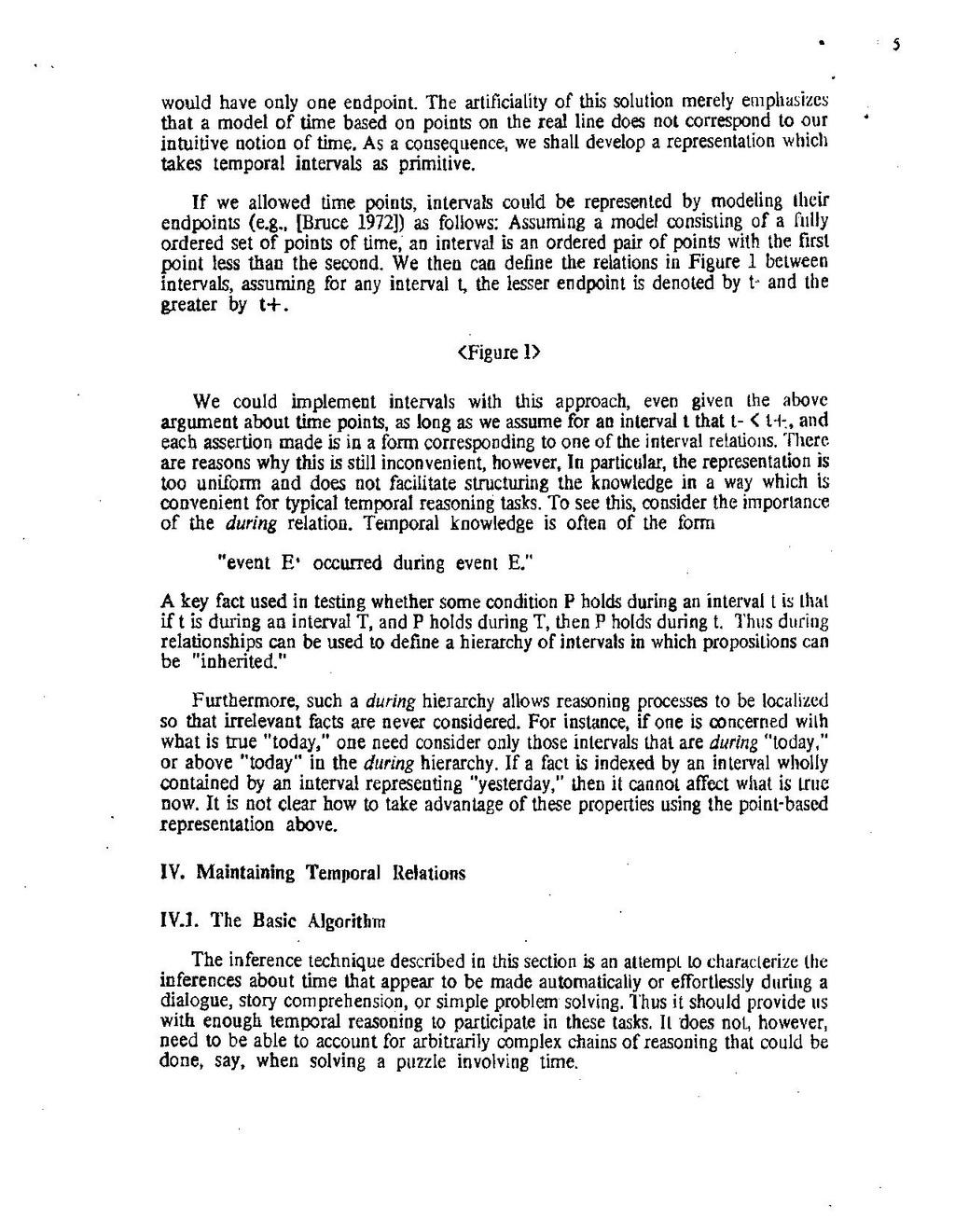would have only one endpoint. The artificiality of this solution merely emphasizes that a model of time based on points on the real line does not correspond to our intuitive notion of time. As a consequence, we shall develop a representation which takes temporal intervals as primitive.
If we allowed time points, intervals could be represented by modeling their endpoints (e.g., (Bruce 1972]) as follows: Assuming a model consisting of a fully ordered set of points of time, an interval is an ordered pair of points with the first point less than the second. We then can define the relations in Figure 1 between intervals, assuming for any interval ļ the lesser endpoint is denoted by t- and the greater by tt.
<Figure 1)
We could implement intervals with this approach, even given the above argument about time points, as long as we assume for an interval 1 that t- <17., and each assertion made is in a form corresponding to one of the interval relations. There are reasons why this is still inconvenient, however, In particular, the representation is too uniform and does not facilitate structuring the knowledge in a way which is convenient for typical temporal reasoning tasks. To see this, consider the importance of the during relation. Temporal knowledge is often of the form
"event E' occurred during event E." A key fact used in testing whether some condition P holds during an interval t is that if t is during an interval T, and P holds during T, then P holds during t. Thus during relationships can be used to define a hierarchy of intervals in which proposilions can be "inherited."
Furthermore, such a during hierarchy allows reasoning processes to be localized so that irrelevant facts are never considered. For instance, if one is concerned with what is true "today," one need consider only those intervals that are during "today," or above "today" in the during hierarchy. If a fact is indexed by an interval wholly contained by an interval representing "yesterday," then it cannot affect what is true pow. It is not clear how to take advantage of these properties using the point-based representation above.
IV. Maintaining Temporal Relations
IV.1. The Basic Algorithm
The inference technique described in this section is an attempt to characterize the inferences about time that appear to be made automatically or effortlessly during a dialogue, story comprehension, or simple problem solving. Thus it should provide us with enough temporal reasoning to participate in these tasks. Il does not, however, need to be able to account for arbitrarily complex chains of reasoning that could be done, say, when solving a puzzle involving time.
